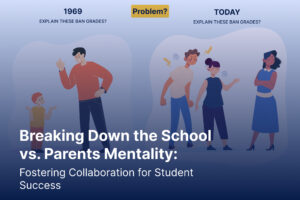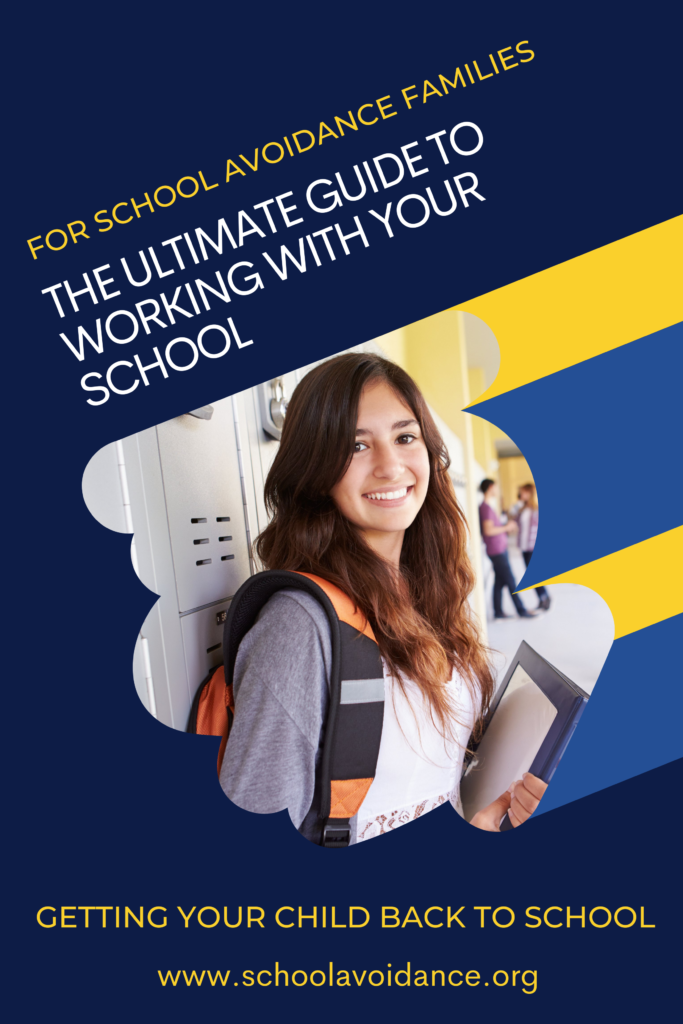
Getting a school-avoidant kid back to school requires collaboration between parents and their school. Often parents need to request help from their school. This can be done through the school’s intervention team, the 504 committee (504 plan), or the child study team (special services department for an IEP).
Section 504 is a Federal Civil Rights Law Meant to Protect Individuals with Disabilities From Discrimination.
Parents may request a 504 Plan to get accommodations and modifications that may help their school avoidant child. According to the Office of Civil Rights (OCR), “The Section 504 regulations require a school district to provide a Free Appropriate Public Education (FAPE) to each qualified student with a disability who is in the school district’s jurisdiction, regardless of the nature or severity of the disability.”
The Americans with Disablilities Act, Amendment Act of 2008 helped clarify how school avoidance kids may qualify for 504 Plans. However, the laws governing these options can be misinterpreted when it comes to school avoidance.
School Avoidance Can Challenges Interpretations of Section 504:
- Because school avoidance in itself is not a diagnosis
- School avoidance can be misunderstood
- When these kids are in school, they don’t exhibit any signs of distress
- Underlying causes are sometimes unclear
- Schools may feel the student is manipulative or defiant
- School avoidant kids aren’t in school, so it challenges the usual accommodations and modifications given to other students.
- Schools may not be utilizing the ADA Amendment Act of 2008’s specifications according to Section 504 of the Rehabilitation Act of 1973
Section 504 States, In Order to Qualify for a 504 plan, A Student Must:
“Have a physical or mental impairment that substantially limits one or more major life activities; or has a record of such an impairment; or is regarded as having such an impairment.”

The ADA Expanded Section 504’s Reach. Clarifying How School Avoidant Kids Can Qualify for 504 Plans
1. The Amendments Act significantly changes how the term “disability” is to be interpreted
“The definition of disability shall be construed broadly and that the determination of whether an individual has a disability should not demand “extensive analysis.“
The Office of Civil Rights (OCR) says “In most cases, application of these rules should quickly shift the inquiry away from the question of whether a student has a disability (and thus is protected by the ADA and Section 504) and toward the school district’s actions and obligations to ensure equal educational opportunities.”
“While there are no per se disabilities under Section 504 and [ADA], the nature of many impairments is such that, in virtually every case, a determination in favor of disability will be made. Thus, for example, a school district should not need or require extensive documentation or analysis to determine that a student with diabetes, epilepsy, bipolar disorder… has a disability under Section 504 and ADA.”
The language doesn’t specify each possibility of a mental health disorder. But this interpretation providing an example of bipolar disorder shows that all diagnosed mental health disorders should be considered. For instance: PTSD, Depression, Anxiety Disorders, Obsessive-Compulsive Disorder……and beyond.
2. Expanded the List of Major Life Activities
If a school avoidant child’s emotional disorder or learning difference is affecting a major life activity, they are entitled to a 504 Plan. This has always been the case, but this amendment broadens the guidance for qualifications.
- Major life activities include, but are not limited to caring for oneself, performing manual tasks, seeing, hearing, eating, sleeping, walking, standing, lifting, bending, speaking, breathing, learning, reading, concentrating, thinking, communicating, and working.
- The broadened list under the ADA, adds Major Bodily Functions, but are not limited to, functions of the immune system, normal cell growth, digestive, bowel, bladder, neurological, brain, respiratory, circulatory, endocrine, and reproductive functions.

Major life activities or function not specifically listed may be a major life activity (the list is not exhaustive).
For example: Some kids with school avoidance may be fearful to leave their homes. This impairs the life activity of intereacting with other people and participating in live outside the home.
And the ability to participate in and benefit from school is a major life activity for a school-aged student. Obviously, the ability to learn is also a life activity. There are many life activities that can be affected by an underlying cause of school avoidance.
3. Learning is not the only major life activity that qualifies a student under Section 504
A student has a disability under Section 504 if a major life activity is substantially limited by his or her impairment. Nothing in the ADA or Section 504 limits coverage or protection to those whose impairments concern learning. Learning is just one of a number of major life activities that should be considered in determining whether a student has a disability within the meaning of those laws. 28 C.F.R. § 35.104; 34 C.F.R. § 104.3(j)(2)(ii).
4. Modified the regulatory definition of “substantially limits”
The OCR explains that “An impairment is a disability if it “substantially limits” the individual’s ability to perform a major life activity as compared to most people in the general population.
It doesn’t need to prevent, or significantly or severely restrict, the individual from performing a major life activity to be considered substantially limiting.
5. Grades: Nowhere does the law state that a child has to be failing in order to qualify for a 504 plan
OCR states, “Grades alone are an insufficient basis upon which to determine whether a student has a disability. Moreover, they may not be the determinative factor in deciding whether a student with a disability needs special education or related aids or services. Grades are just one consideration and do not provide information on how much effort or how many outside resources are required for the student to achieve those grades.”
The ADA interpretations demsonstrate how school-avoidant kids can meet Section 504 requirements.
After reading this, do you see clearly how a child with school avoidance may qualify for a 504 Plan?
You can see the OCR’s Questions and Answers on the ADA Amendments Act of 2008 for Students with Disabilities Attending Public Elementary and Secondary Schools






